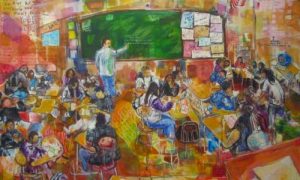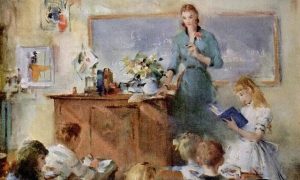PDF #1 – How classroom teachers can help students learn and teach them how to learn
Classroom Teachers Help Students – You would think that college students are expert learners; after all, they have completed 12 years of school and have chosen to extend their academic path. In reality, many college students are deficient learners who employ weak strategies in the classroom and while studying (Gubbels, 1999; Kiewra, 1991; Pressley, Yokoi, Van Meter, Van Etten, & Freebern, 1997).

What Teachers Need to Know?
First, teachers need to understand subject matter deeply and flexibly so that they can help students create useful cognitive maps, relate ideas to one another, and address misconceptions. Teachers need to see how ideas connect across fields and to everyday life. (Shulman, 1987.)
Interpreting learners’ statements and actions and shaping productive experiences for them require an understanding of child and adolescent development and of how to support growth in various domains — cognitive, social, physical, and emotional. Teaching in ways that connect with students also requires an understanding of differences that may arise from culture, family experiences, developed intelligences, and approaches to learning. Teachers need to be able to inquire sensitively, listen carefully, and look thoughtfully at student work.
Teachers need to know about curriculum resources and technologies to connect their students with sources of information and knowledge that allow them to explore ideas, acquire and synthesize information, and frame and solve problems. And teachers need to know about collaboration: how to structure interactions among students, how to collaborate with other teachers, and how to work with parents to shape supportive experiences at school and home.
What else?
Teachers play an essential role in the academic success of all the children they teach. However, it is critical that they play an even more dominant role in helping children who are facing academic failure and/or performing below their academic potential. Admittedly, this isn’t an easy task with a classroom full of other students who also need the teacher’s help and guidance.

An additional challenge for many teachers is learning to effectively cope with the differences in culture and socioeconomic status. It may exist with their students. Such differences may include learning and social styles, as well as communication skills, and the gaps they can create between teacher and student can be frustrating and even overwhelming.
However, with proper support from colleagues and administrators, teachers can significantly improve their chances of getting through to students, and in turn, increase their chance for academic success.
After reading “Classroom Teachers Help Students” you can check important issues for ESL teachers on the section PDFs and visit my channel by YouTube.
